Grand Inquisitor facts for kids
Quick facts for kids Grand Inquisitor |
|
|---|---|
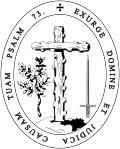 |
|
| Appointer | Monarch |
| Inaugural holder | Tomás de Torquemada |
| Formation | 1483 |
| Final holder | Jerónimo Castillón y Salas |
| Abolished | 1820 |
The Grand Inquisitor (from the Latin Inquisitor Generalis, meaning General Inquisitor) was the most important leader of the Inquisition. The Inquisition was a special system of church courts. These courts were set up by the Catholic Church to deal with people accused of not following its rules or beliefs.
The title "Grand Inquisitor" most often refers to the chief leader of the Spanish Inquisition. This was a very powerful court in Spain. There was also a Grand Inquisitor in Portugal. This person was chosen by the king, but approved by the Pope.
The most famous Grand Inquisitor was Tomás de Torquemada. He was a Spanish monk from the Dominican Order. He played a key role in starting the Spanish Inquisition.
Contents
Leaders of the Spanish Inquisition
The Grand Inquisitor was the head of the Spanish Inquisition. This person was appointed by the King of Spain. They oversaw all the activities of the Inquisition throughout the country.
Early Grand Inquisitors
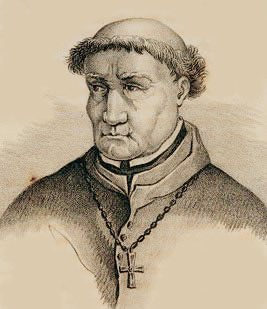
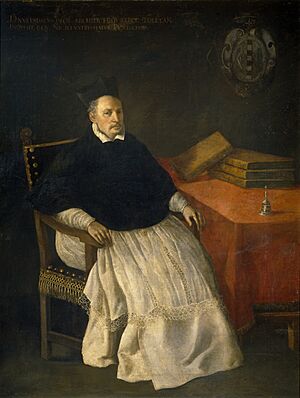
Here are some of the first Grand Inquisitors of Spain:
| From | To | Grand Inquisitor | Other important jobs |
|---|---|---|---|
| 1483 | 1498 | Tomás de Torquemada | Leader of the Dominican Convent of Santa Cruz in Segovia |
| 1499 | 1506 | Diego de Deza Tavera | Archbishop of Seville |
| 1506 | 1507 | Diego Ramírez de Guzmán | Bishop of Catania, Bishop of Lugo |
Separation of Courts in Castile and Aragon
For a short time, the Inquisition was split into two parts. One part was for the region of Castile, and the other for Aragon.
Grand Inquisitors of Castile
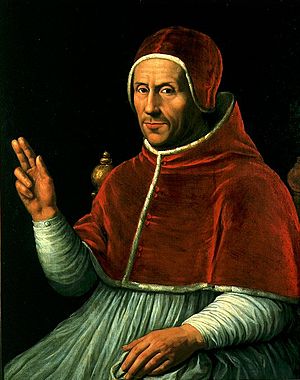
| From | To | Grand Inquisitor | Other important jobs |
|---|---|---|---|
| 1507 | 1517 | Francisco Jiménez de Cisneros | Cardinal, Archbishop of Toledo |
Grand Inquisitors of Aragon


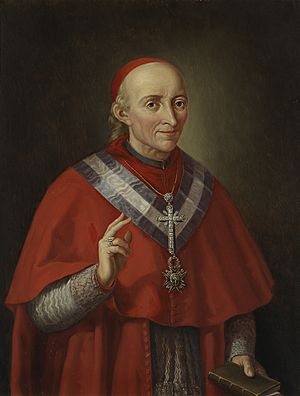
| From | To | Grand Inquisitor | Other important jobs |
|---|---|---|---|
| 1507 | 1513 | Juan Enguera | Bishop of Vich, Bishop of Lleida, Bishop of Tortosa |
| 1513 | 1516 | Luis Mercader Escolano | Bishop of Tortosa |
| 1516 | 1517 | Adrian of Utrecht | Cardinal priest, Bishop of Tortosa |
Reunification of the Inquisition
After 1517, the Inquisition was brought back together under one Grand Inquisitor. This continued until the office was abolished in 1820.
| From | To | Grand Inquisitor | Other important jobs |
|---|---|---|---|
| 1518 | 1522 | Adrian of Utrecht | Cardinal priest, Bishop of Tortosa |
| 1523 | 1538 | Alonso Manrique de Lara | Bishop of Badajoz, Archbishop of Seville, Cardinal |
| 1539 | 1545 | Juan Pardo de Tavera | Archbishop of Toledo |
| 1546 | 1546 | García de Loaysa | Archbishop of Seville |
| 1547 | 1566 | Fernando de Valdés y Salas | Archbishop of Seville |
| 1566 | 1572 | Diego de Espinosa | Bishop of Sigüenza, Bishop of Cuenca |
| 1572 | 1572 | Pedro Ponce de León | Bishop of Ciudad Rodrigo, Bishop of Plasencia |
| 1573 | 1594 | Gaspar de Quiroga y Vela | Archbishop of Toledo |
| 1595 | 1595 | Jerónimo Manrique de Lara | Bishop of Cartagena, Bishop of Ávila |
| 1596 | 1599 | Pedro de Portocarrero | Bishop of Calahorra, Bishop of Cuenca |
| 1599 | 1602 | Fernando Niño de Guevara | Archbishop of Seville |
| 1602 | 1602 | Juan de Zúñiga Flores | Bishop of Cartagena |
| 1603 | 1608 | Juan Bautista de Acevedo | Bishop of Valladolid, Patriarch of the Indias |
| 1608 | 1618 | Bernardo de Sandoval y Rojas | Archbishop of Toledo |
| 1619 | 1621 | Luis de Aliaga Martínez | |
| 1622 | 1626 | Andrés Pacheco | Bishop of Cuenca, Patriarch of the Indias |
| 1627 | 1632 | Antonio de Zapata Cisneros | Archbishop of Burgos |
| 1632 | 1643 | Antonio de Sotomayor | Prior of Santo Domingo |
| 1643 | 1665 | Diego de Arce y Reinoso | Bishop of Tuy, Bishop of Avila, Bishop of Palencia |
| 1665 | 1665 | Pascual de Aragón | Archbishop of Toledo |
| 1666 | 1669 | Juan Everardo Nithard | |
| 1669 | 1695 | Diego Sarmiento de Valladares | Bishop of Oviedo, Bishop of Plasencia |
| 1695 | 1699 | Juan Tomás de Rocaberti | Prior of Santo Domingo, Archbishop of Valencia |
| 1699 | 1699 | Alonso Fernández de Córdoba y Aguilar | Appointed Grand Inquisitor, but died before he could start. |
| 1699 | 1705 | Baltasar de Mendoza y Sandoval | Bishop of Segovia |
| 1705 | 1709 | Vidal Marín del Campo | Archbishop of Burgos |
| 1709 | 1710 | Antonio Ibáñez de Riva Herrera | Archbishop of Zaragoza, Archbishop of Toledo |
| 1711 | 1716 | Francesco del Giudice | Archbishop of Monreale |
| 1715 | 1715 | Felipe Antonio Gil de Taboada | Chosen as Grand Inquisitor but did not serve. |
| 1717 | 1717 | José de Molines | Announced in Rome, but held by Austrians and died without serving. |
| 1718 | 1718 | Felipe de Arcemendi | Died without serving. |
| 1720 | 1720 | Diego de Astorga y Céspedes | Archbishop of Toledo |
| 1720 | 1733 | Juan de Camargo y Angulo | Bishop of Pamplona |
| 1733 | 1740 | Andrés de Orbe y Larreategui | Archbishop of Valencia |
| 1742 | 1746 | Manuel Isidro Orozco Manrique de Lara | Archbishop of Santiago |
| 1746 | 1755 | Francisco Pérez de Prado | Bishop of Teruel |
| 1755 | 1774 | Manuel Quintano Bonifaz | Titular Archbishop of Farsala |
| 1775 | 1783 | Felipe Beltrán Serrano | Bishop of Salamanca |
| 1784 | 1793 | Agustín Rubin de Ceballos | Bishop of Jaén |
| 1793 | 1794 | Manuel Abad y Lasierra | Titular Archbishop of Selymbria |
| 1794 | 1797 | Francisco Antonio Lorenzana y Butrón | Archbishop of Toledo |
| 1797 | 1808 | Ramón José de Arce y Rebollar | Archbishop of Burgos |
| 1808 | 1814 | Abolition of the Inquisition | |
| 1814 | 1818 | Francisco Javier Mier Campillo | Bishop of Almería |
| 1818 | 1818 | Cristóbal Bencomo y Rodríguez | Titular Archbishop of Heraclea (position rejected by himself) |
| 1818 | 1820 | Gerónimo Castillón y Salas | Bishop of Tarazona |
Leaders of the Portuguese Inquisition
The Portuguese Inquisition also had its own Grand Inquisitor. This leader was chosen by the King of Portugal, but then approved by the Pope.
See also
 In Spanish: Inquisidor general para niños
In Spanish: Inquisidor general para niños

